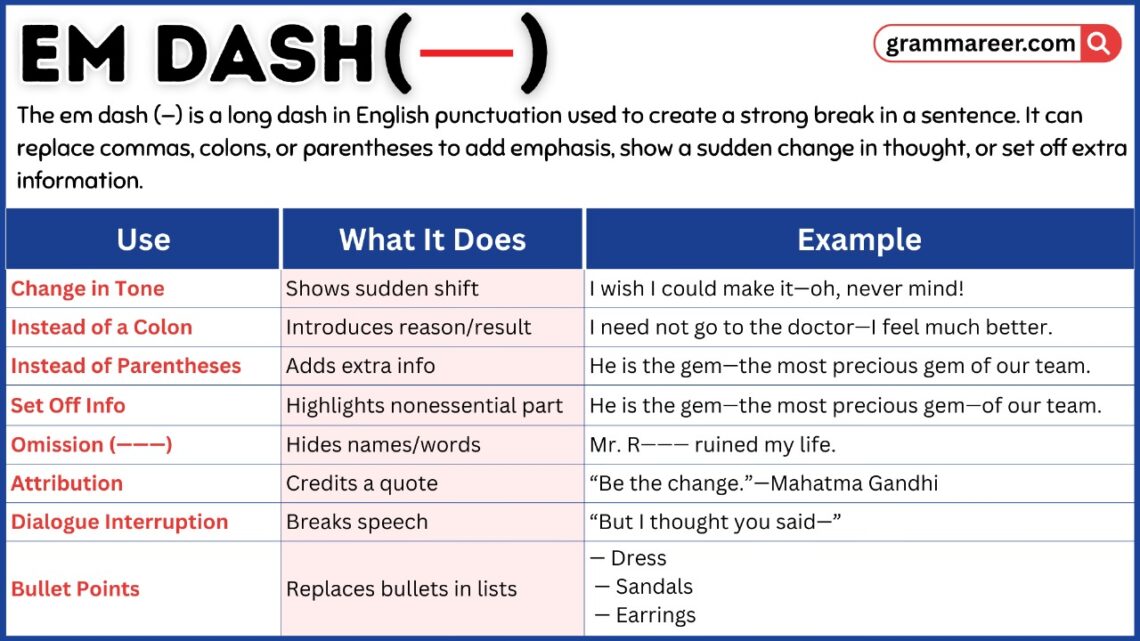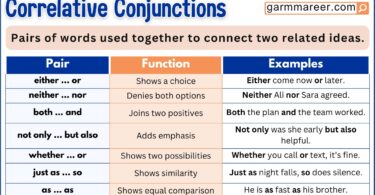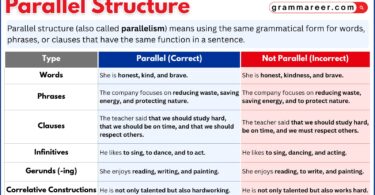The em dash (—) is one of the most versatile punctuation marks in English. Writers often use it to add emphasis, show interruptions, or replace commas, parentheses, and colons for a smoother flow. Unlike other punctuation marks, the em dash brings flexibility and style, helping sentences feel more engaging and expressive.
Once you understand how to use it, the em dash can make your writing clearer and more dynamic.
Table of Contents
What is an em dash?
An em dash (—) is a long horizontal line used in writing. Writers use it to add extra details, break a sentence for effect, or replace other punctuation marks like commas, brackets, or colons. The name “em dash” comes from its length—it’s roughly the same width as the capital letter M. By comparison, the en dash is about as wide as the letter N, and the hyphen is even shorter. Among these three, the em dash stands out as the longest and most versatile, giving writers more flexibility in their sentences.
Example:
- She was about to speak—then stopped suddenly.
- Here, the em dash shows a sudden break in thought, something a comma or period wouldn’t express as naturally.
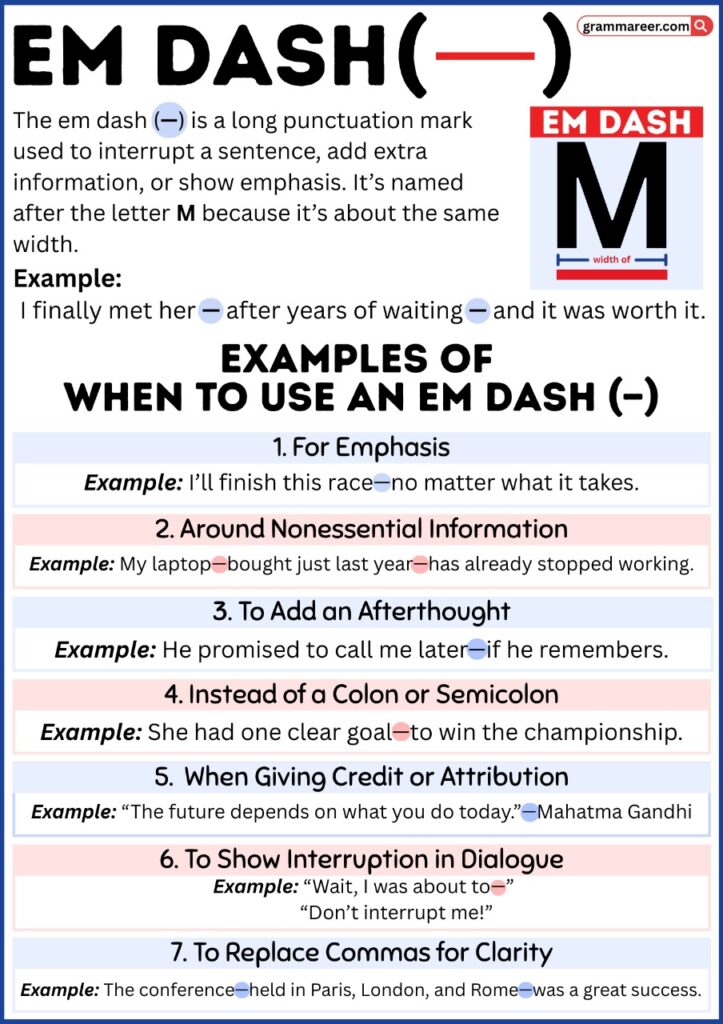
Why do we call it an em dash?
The em dash gets its name from its size. In old printing, it was designed to be about as wide as the capital letter M. That’s why it’s called an “em dash.”
Examples of the em dash:
Here are a few sentences showing how the em dash works. Notice how it creates a pause or adds extra information:
- The team gave it their all—and they finally won the match.
- I was going to call you—then I realized it was too late.
- He loves traveling—who doesn’t?—but he hates packing.
It is flexible. It can replace commas, brackets, or even a colon, and it often makes the sentence sound more natural.
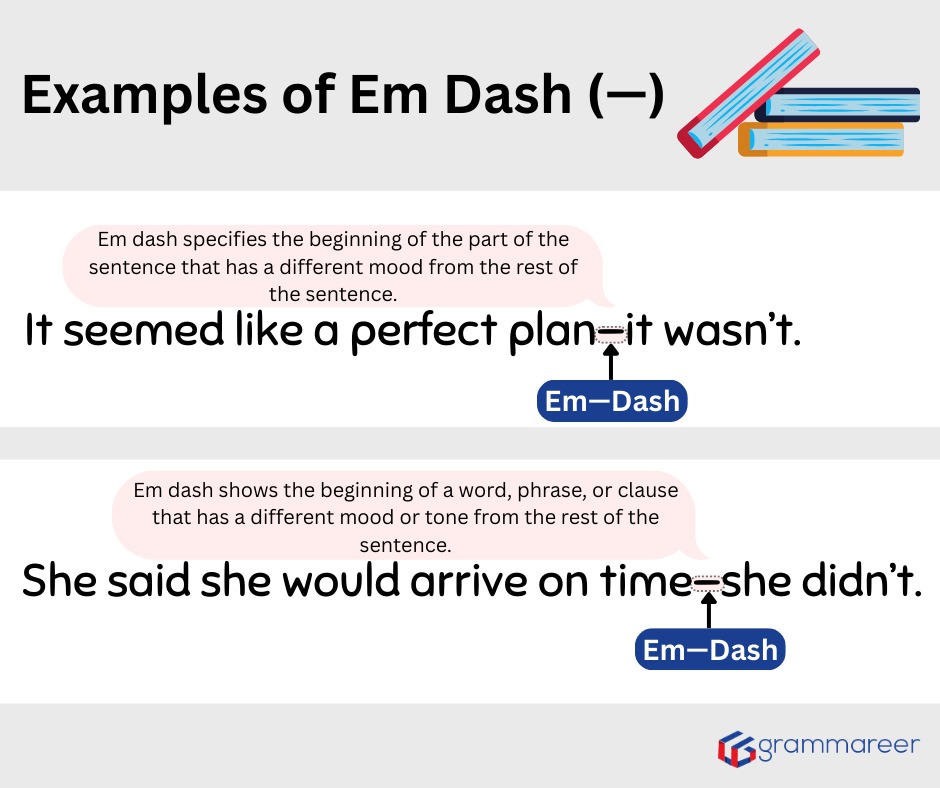
Why Do We Use the Em Dash?
It is like a multitool in writing. It doesn’t really have one single job—it often steps in and takes the place of other punctuation marks, like commas, parentheses, or colons. The difference is that it feels more natural, adds a stronger pause, and catches the reader’s attention.
1. To add extra information
You can use an em dash to drop in extra details without breaking the flow.
Example:
- My cousin—who just graduated last month—already found a great job.
In above example, you could have used commas, but the em dash makes the pause feel stronger.
2. To replace parentheses
If you want to add a side note or extra thought, em dashes can make it feel less formal than parentheses.
Example:
- he plan—if you can even call it that—was doomed from the start.
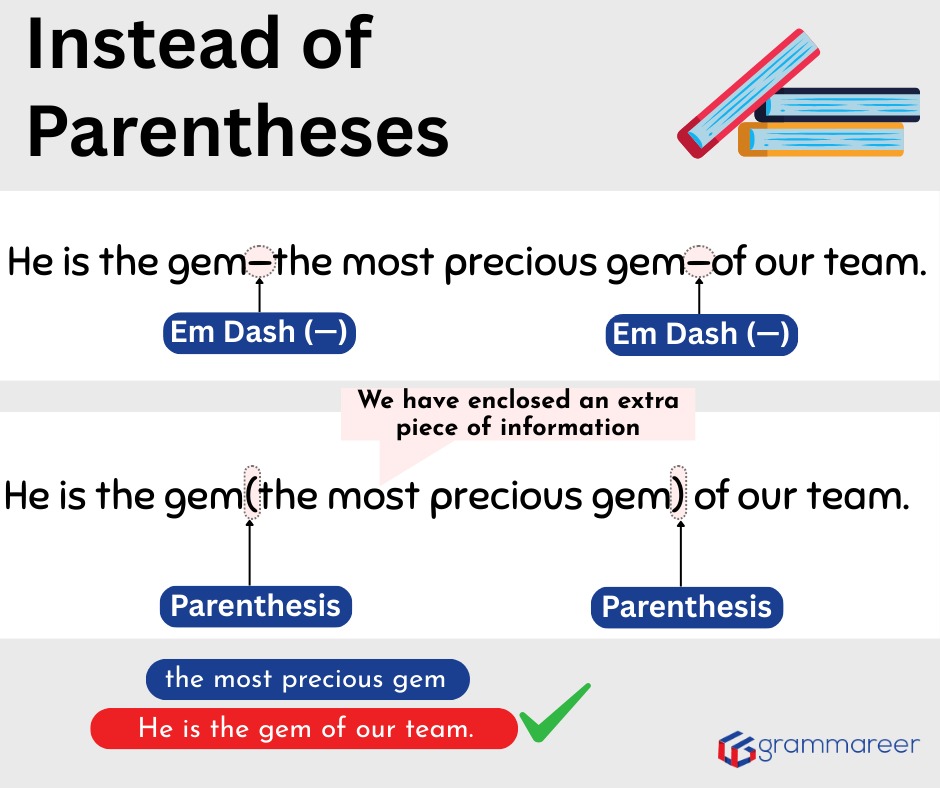
3. To replace a colon
When you want to emphasize what comes at the end of a sentence, an em dash works really well.
Example:
- He only wanted one thing—peace.
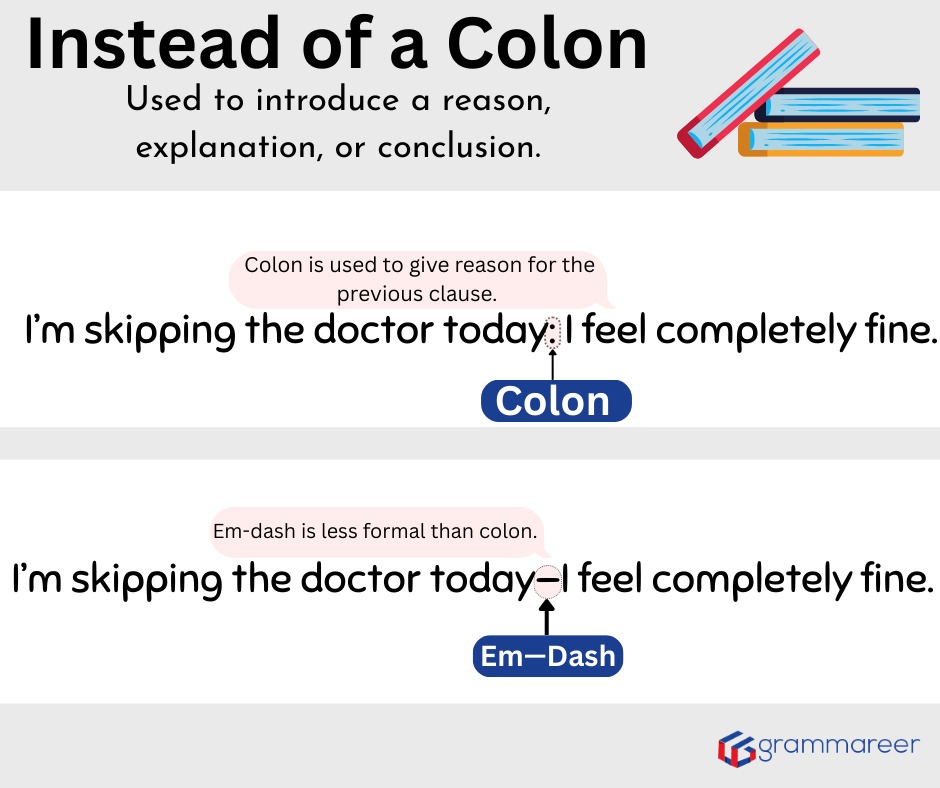
4. To show interruptions or sudden breaks
In dialogue or storytelling, an em dash shows when someone is cut off or when the thought suddenly changes.
Example:
- “But I thought you said—”
- “No, I never said that.”
Example:
- I was going to explain—oh, forget it.
5. To make long lists easier to read
When a sentence has a list, this dash can make it stand out clearly.
Example:
- Pens, notebooks, markers—they were scattered all over the desk.
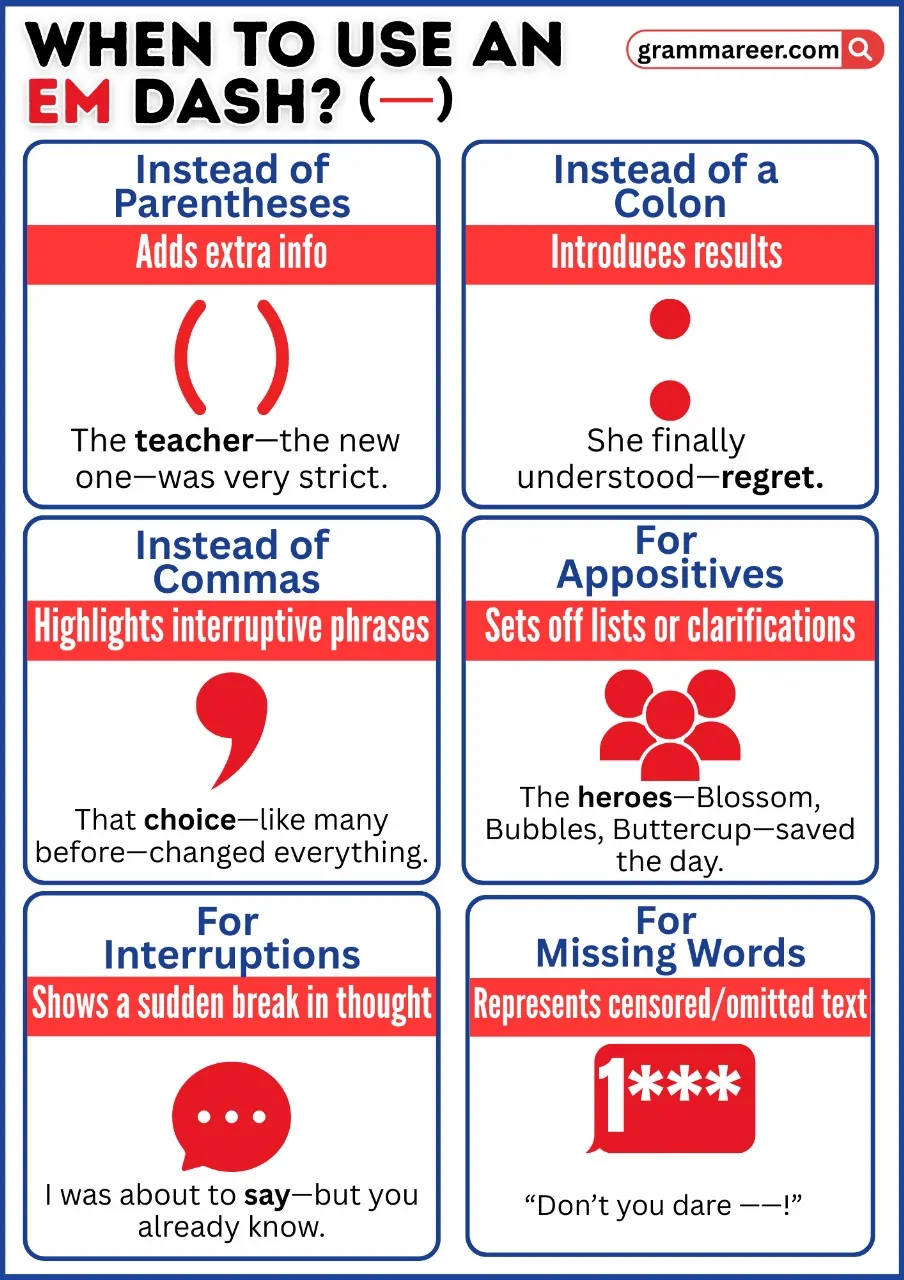
How to use an em dash?
One thing many people wonder about the it, is whether to put spaces around it. The truth is, there’s no single “right” answer—it depends on which style you follow.
- In American English, the em dash is usually written without spaces:
- The decision—though risky—turned out to be the right one.
- In some newspapers and British English, you’ll often see spaces on either side:
- The manager — clearly upset — left the room early.
Both ways are correct; the key is to pick one style and stick with it. Consistency makes your writing look neat and professional.
There’s also something called the three-em dash (———), which is different. It’s used to hide names, abusive words, or sensitive details in writing, like:
- A former minister, ———, refused to comment.
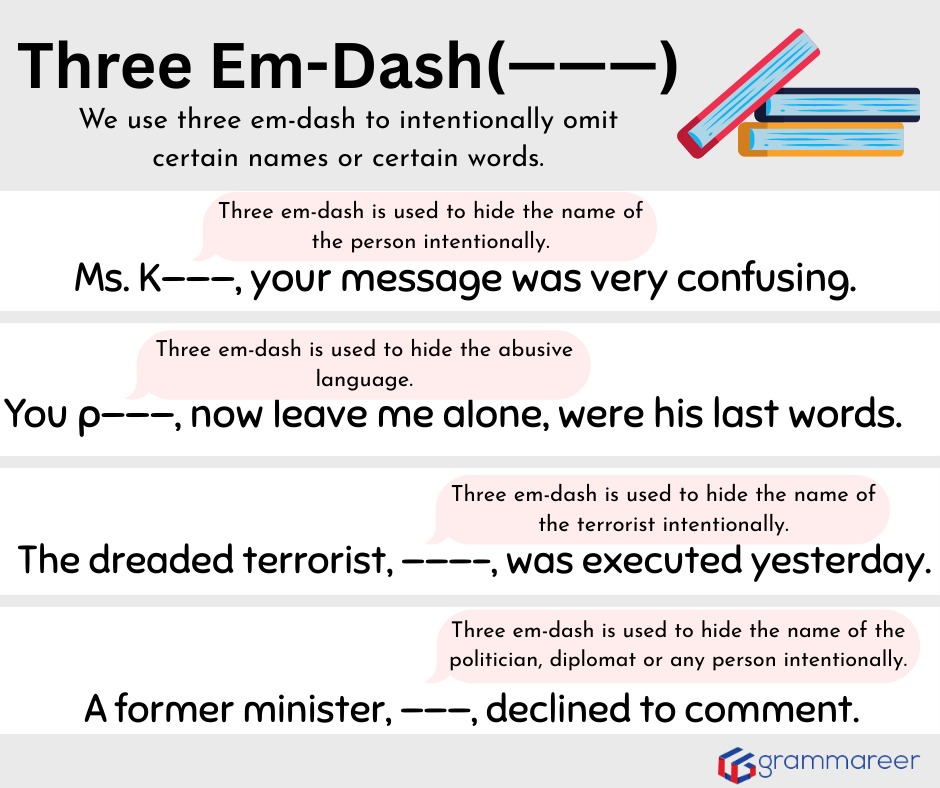
How to Type an Em Dash?
Typing an em dash isn’t as tricky as it looks—you just need to know the right shortcut for your device.
| Mac | Windows | Phones/Tablets |
| On Mac: Hold down Option + Shift and then press the minus key (next to the 0). | On Windows: Use Alt + 0151 on the numeric keypad, or open the emoji & symbols panel with Windows + period (.). | On Phones/Tablets: Tap and hold the hyphen key until a menu pops up, then slide your finger to the longest dash. |
If shortcuts feel complicated, don’t worry. Most word processors also have an Insert → Symbols/Special Characters option where you can just select the em dash from a list.
Hyphen vs Dash
| Hyphen (-) | En Dash (–) | Em Dash (—) |
| Used to connect words or parts of words. No spaces on either side. • A well-known actor • My brother-in-law is funny | Used to show a range, link, or contrast. Pages 10–20 Monday–Friday Lahore–Karachi train | Used to add emphasis, interruptions, or replace commas/colons. She was sure—he wasn’t. I need one thing—silence. The project—though difficult—was a success. |
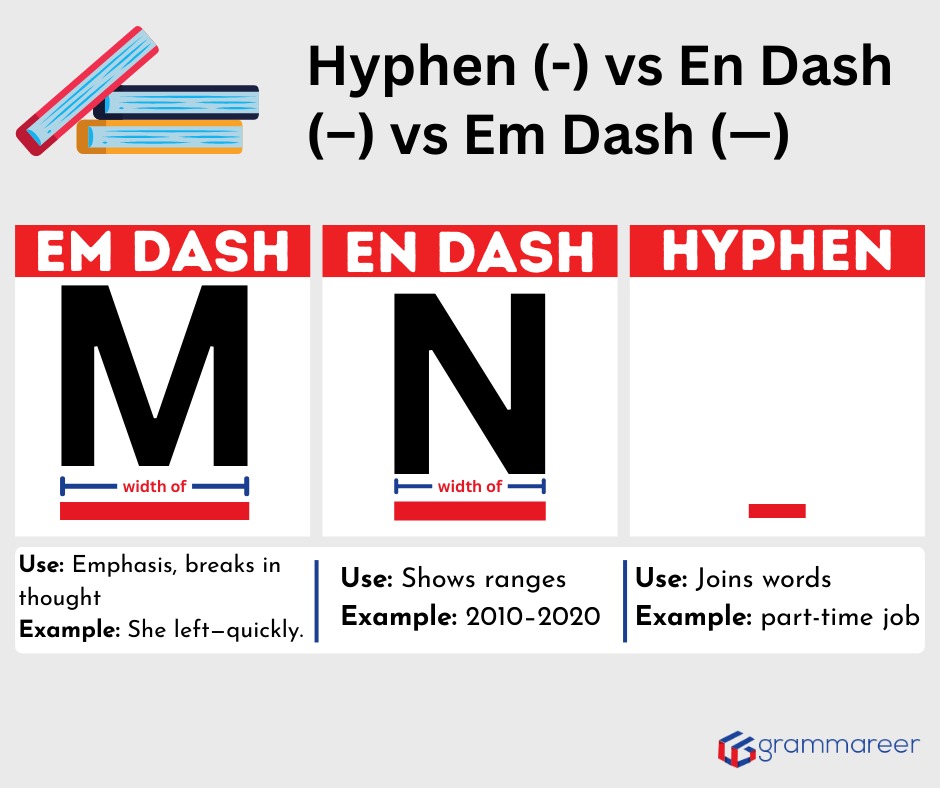
Common Mistakes When Using Dashes
Dashes add style and clarity, but only if used correctly. Overusing or misusing them makes writing messy. Here are mistakes to avoid:
- They’re for emphasis or pauses, not to replace every punctuation mark.
- Hyphen (-) joins words (ex-partner). Dashes (–, —) separate ideas.
- Don’t use dashes instead of commas, colons, or semicolons. Save them for impact.
- No spaces before or after a dash—keep it tight.
- Use commas or colons, not dashes, to introduce quotes.
- ❌ He wanted to travel—it was too expensive.
✅ He wanted to travel, but it was too expensive.
Treat dashes as a stylistic choice, not a default. Use them when they genuinely improve clarity or add impact.
FAQs
An em dash (—) is a punctuation mark used to create a strong break in a sentence, add emphasis, or indicate an interruption. It is longer than a hyphen (-) and en dash (–).
A hyphen connects words (like well-known), an en dash shows ranges (like 2010–2020), while an em dash creates pauses, breaks, or emphasis in sentences.
Use it to:
• Add emphasis: She finally answered — after thinking for hours — that she agreed.
• Show interruptions in dialogue: “Wait — what do you mean?”
• Replace parentheses for a smoother flow: The decision — though risky — was correct.
Yes, but avoid overuse. Two em dashes can enclose extra information or an aside. Too many can make the sentence confusing.
• Windows: Alt + 0151
• Mac: Option + Shift + Hyphen
• Word/Google Docs: Use the Insert → Symbol feature or auto-correct (–)
You May Also Like

